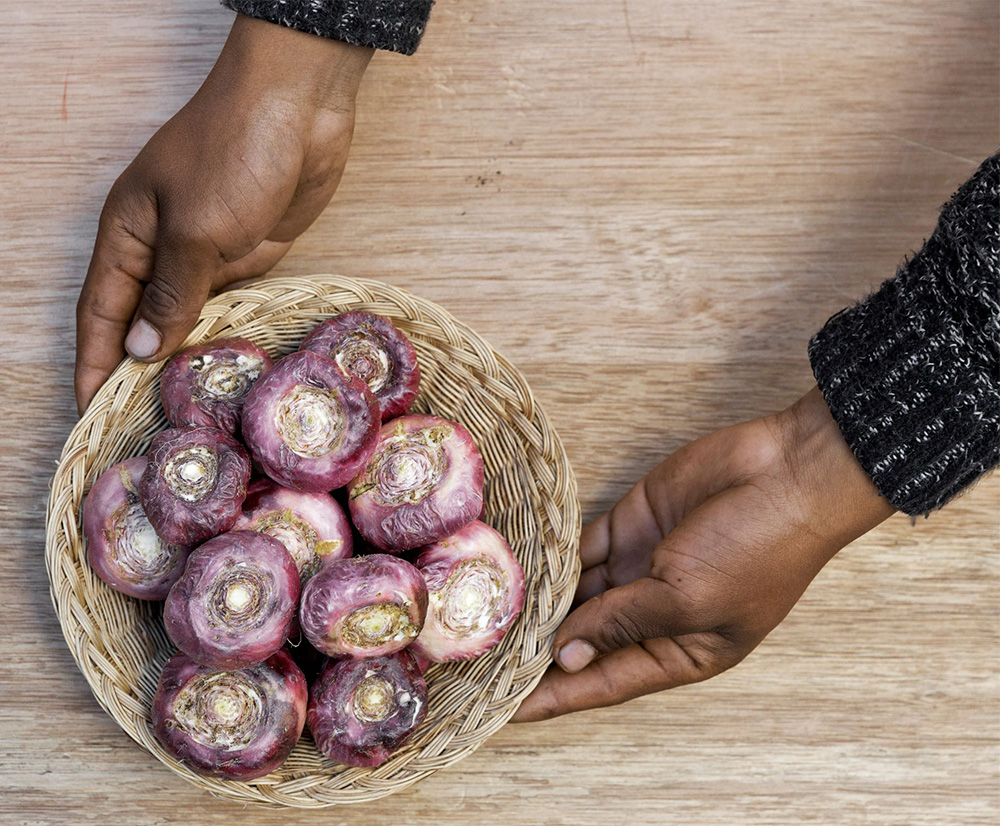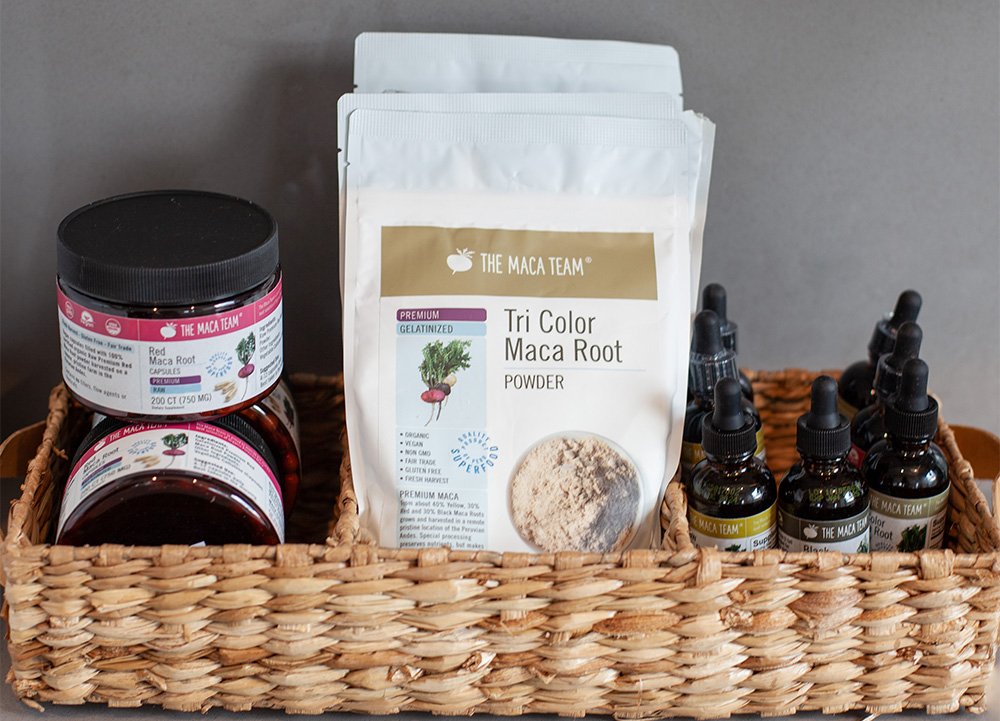Where Is Maca From
Introduction
 If you’ve been to a health food store, talked with a naturopathic doctor or had a conversation about hormones with a friend recently, you’re pretty likely to have heard something about maca root. This simple root vegetable is no doubt one of the more popular superfoods available today. Its popularity derives in large part from the many benefits that are associated with adding it to your diet. Since it works to support healthy hormone balance maca root’s benefits are indeed wide ranging.
If you’ve been to a health food store, talked with a naturopathic doctor or had a conversation about hormones with a friend recently, you’re pretty likely to have heard something about maca root. This simple root vegetable is no doubt one of the more popular superfoods available today. Its popularity derives in large part from the many benefits that are associated with adding it to your diet. Since it works to support healthy hormone balance maca root’s benefits are indeed wide ranging.
As it’s gained in popularity we’ve received more questions about where maca comes from, how it grows and why you can’t simply just grow it yourself. In this article, we’ll do our best to answer all of those.
Where Does Maca Root Come From?
Maca is a root vegetable native to the high Andes of Peru. The earliest archaeological evidence we have suggests that maca, originally a wild vegetable, was first cultivated between two and five thousand years ago. In the 1990s, researchers discovered maca roots stored is a specialized container in a cave dwelling that dated back about 10,000 years. This cave is located on the Junin plateau of central Peru at about 12,000 feet (3600 m) above sea level. It is based on this discovery that the Junin area is considered to be the point of origin of maca root.
Where Does Maca Root Grow?
Today the highest quality and most potent maca is still grown in the Junin plateau, specifically in areas surrounding Lake Junin (Chinchaycocha) which the largest lake complete within Peru. Maca roots have been grown in other areas of Peru, notably in the province of Cajamarca. They are also grown in the high Andes of Bolivia, though in much smaller quantities. It is estimated that over 90% of maca roots grown worldwide come from Peru.
Can Maca Grow Outside of The Andes?
Maca roots require special circumstances to grow well. First, edible roots are only produced when maca is grown at high elevations. Maca plants have been grown near sea level in various parts of the world including Lima, Peru, California, USA and Berlin, Germany. In all cases it was discovered that while the top of the plant grew fairly well, it simply did not produce a significantly sized root. Further research and experimentation has revealed that maca roots grow best at elevations above 9000 ft. (3500 m) and reaching all the way to 15,000 ft. (4500 m). Second, it seems that maca roots only grow well in the specific soil conditions found in the high Andes. Researchers have tried to grow maca roots in the Rockies mountain range both in Canada and Colorado but have failed to produce a root with the same nutritional properties as those grown in the Andes. Similarly, in 2013-15 speculative farmers grew maca roots in the mountains of Yunaan province in China. The results were so abysmal that even Chinese consumers refused to purchase them. You can read more about those results in our Peruvian vs. Chinese Maca article. A third reason that maca root grows best in the Junin area of Peru is the micro-climate around Lake Junin. In this area the sunlight is intense, there are extreme temperature swings between the night and day, a very specific amount of rainfall and humidity, regular high winds and a very particular rocky soil. Maca root thrives in these inhospitable conditions that would kill many other plants.
Here is an image of what the area around Lake Junin looks like:

What Is The History of Maca?
Maca root occupies a special place in the culture of people indigenous to the high Andes. One origin story relates that it was first discovered when farmers noticed that the livestock that foraged on maca were more fertile and produced stronger offspring than those that didn’t consume any maca. Shortly thereafter humans began consuming the roots themselves and noticed similar results. As word spread, more and more people began cultivating maca roots.
By the time the Incans arrived in the mountains of central Peru, maca root was a staple of the local populations, making up a significant portion of their diets. When Incans conquered these local people, they took them as slaves and noticed that they worked significantly harder and longer than other conquered groups. Quickly, the Incans attributed this extra energy to the consumption of maca roots. They then began feeding maca to all of the people they enslaved and eventually required all provinces in the Peruvian Andes to pay tribute and tax to the central Incan government in the form of maca roots.  When the Spanish arrived in the early 1500s, maca had an important place in the Incan empire. As the Spanish began mixing with locals and eating maca themselves, the simple root drew the interest of the authorities, both secular and religious. Chroniclers and priests recorded how the root was used by local populations. And generals occasionally banned their solders from eating the root in order to avoid pillaging of the locals.
When the Spanish arrived in the early 1500s, maca had an important place in the Incan empire. As the Spanish began mixing with locals and eating maca themselves, the simple root drew the interest of the authorities, both secular and religious. Chroniclers and priests recorded how the root was used by local populations. And generals occasionally banned their solders from eating the root in order to avoid pillaging of the locals.
Although it did not flourish beyond the high Andes, maca indeed survived the colonial Spanish period. Then, in the mid 1900s maca roots started to make their way to other parts of Peru as more and more people traveled from the mountains to other parts of the country. By the 1960s it was beginning to be introduced to an international audience on a larger scale.
Since that time, knowledge of maca root has grown tremendously. Today, maca products are readily available in many health food stores and online retailers, and it can be purchased in various forms, including powders, capsules, and liquids. We at The Maca Team are proud to provide the best selection of high-quality, organic Peruvian grown maca root anywhere. Buying organic maca powder extracts, capsules, root chips or blends from us will ensure that you are getting the best health benefits from maca while at the same time avoiding any potential contaminants.
Final Thoughts
In conclusion, we are grateful to source and sell this amazing root vegetable. Maca is certainly a versatile and nutritious root food source. Native to the high Andes of Peru, it has been used for thousands of years by indigenous people for its numerous health benefits and has a unique flavor. Thanks in large part to dedicated farmers, maca has gained worldwide popularity in recent years as a health food supplement. Whether you are looking to improve your energy levels, boost your athletic performance, or support your overall health and wellbeing, Peruvian grown maca root is a great food to add to your diet.
We hope you enjoyed this article. Please let us know if you have any questions regarding any of our products. We're always happy to help.
Enjoy the day!![]()

